On August 12, 2024, in Konar Dam, Hazaribagh, an exhausted white-rumped vulture was found floundering. It was nearly lifeless, its wings barely able to rise from the water’s surface, its mighty frame trembling from exhaustion. Alarmed at the sight of the large bird, local villagers rushed to help and pulled it from the water. Unbeknownst to them, this vulture had traveled a harrowing journey that spanned over 1,200 kilometers and an incredible altitude of 921 meters. Tagged with a GPS tracker and a mysterious ring engraved with the word “Dhaka,” the vulture’s story was far from ordinary.
Indian Masterminds exclusively spoke with DFO Hazaribagh, IFS officer Vikas Ujjwal, and DFO (Wildlife Division), IFS Suraj Kumar Singh to learn more about the thrilling rescue and rehabilitation of the lost bird.
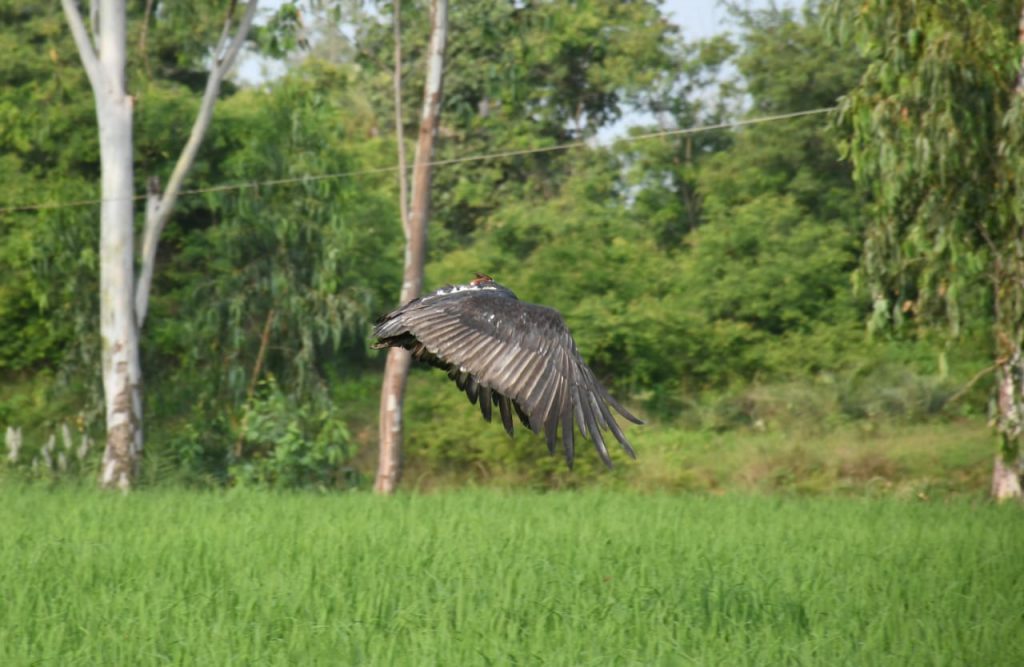
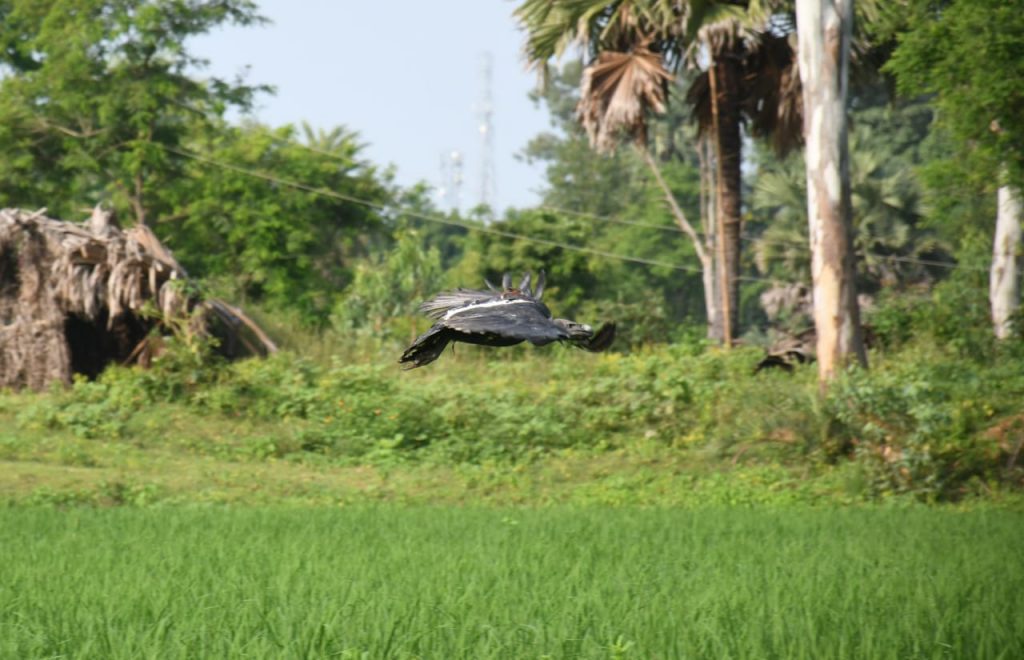
FROM SUSPICION TO UNDERSTANDING
As the villagers held the weakened bird, whispers of espionage spread like wildfire. Amidst political tension in Bangladesh, some feared this vulture was no mere animal but a tool for spying. The misunderstanding spiraled out of control when the local fishermen spotted the GPS device. Fortunately, the forest authorities in India, led by the dynamic IFS officer Mr. Ujjwal, were quickly alerted.
“When the local fishermen rescued it, it had a GPS tracker and an identity ring. They misunderstood it as a spy bird as major turmoil was going on in Bangladesh during the time and the word ‘Dhaka’ was inscribed on its ring. We had to step in and send our team there. We caught hold of the bird and identified it with the help of an ornithologist and local bird expert,” he told Indian Masterminds.

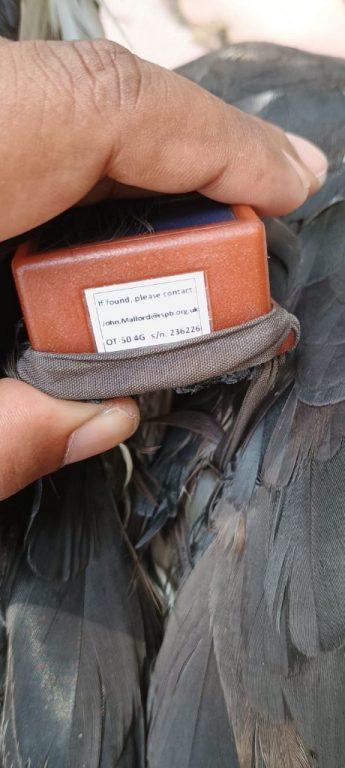
Upon further examination, it was confirmed that the bird was no spy but a critically endangered white-rumped vulture, one of the last of its kind. Identified with the help of ornithologists and local experts, the bird was linked to a global conservation project run by the Bombay Natural History Society (BNHS) and the UK-based Royal Society for the Protection of Birds (RSPB). The majestic creature was immediately rushed to Hazaribagh, where its battle for life began.
“We identified the bird as white-rumped vulture which is a schedule 1 species and it is critically endangered. The bird came here as the area is a traditional nesting ground for such vultures. It took flight from Dhaka and eventually landed in Hazaribagh,” he stated.
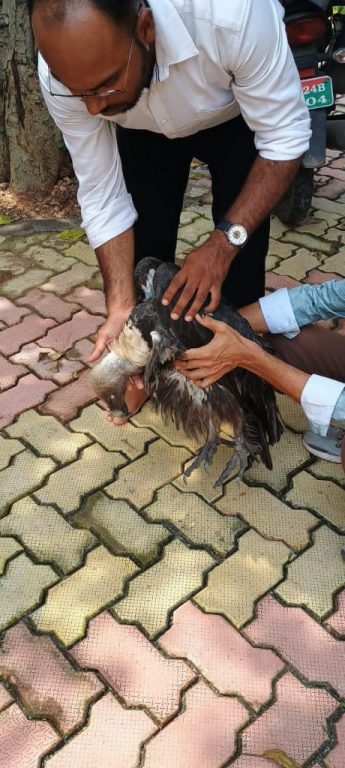

THE STRUGGLE FOR SURVIVAL
When the vulture arrived at the Hazaribagh rescue center, it was hanging on by a thread. Days without food had left it emaciated, dehydrated, and on the brink of death. The rescue team worked tirelessly to restore its strength.
“The bird was in such bad shape. We had to act fast,” said Mr. Ujjwal. A specialized diet of goat meat and hydration fluids was carefully administered, and veterinarians from BNHS and RSPB were consulted to devise a life-saving rehabilitation plan. Dr. Satyaprakash (ornithologist) keenly monitored the bird.
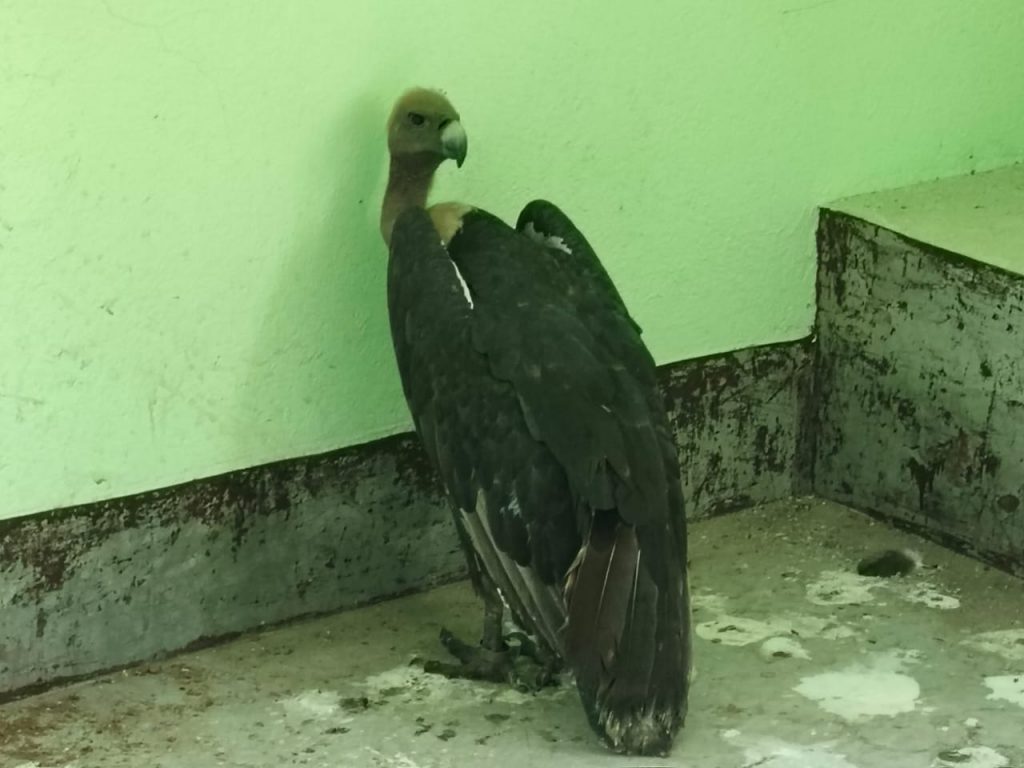
The team left no stone unturned. The vulture’s frail wings were strengthened with light therapy, and medicines were administered to combat dehydration and infection. The bird, determined to survive, responded with slow but steady progress. Day after day, it regained its strength, its eyes now sharp and focused, its wings flexing with renewed vigor.
“We fed the bird, monitored it day in and out, gave it red meat to eat, and followed all the instructions provided by the vet. RFO Bagodar, Shri Suresh Ram played an important role in its rehabilitation. Eventually, the bird gained back its strength after being rehabilitated for almost a month,” the officer stated.

A GLIMMER OF HOPE
By August 12, 2024, just a few months after its near-death experience, the white-rumped vulture was ready for release. “It was a tense moment for all of us,” recalled Suraj Kumar Singh, Divisional Forest Officer of the Wildlife Division in Hazaribagh. “We monitored every movement, every flutter of its wings. We knew this bird wasn’t just an ordinary vulture—it was a symbol of hope.”
The forest department had meticulously planned its flight route, ensuring the bird would be released into an area with a thriving vulture population. This was crucial, as vultures, once abundant, now struggle to find food in an environment where dead livestock is often buried rather than left in the open.
“It is very important for us to not lose any more birds as vultures are one of the most affected birds when it comes to decline in population. The reason it could not eat for so many days is because people have stopped the practice of disposing of their dead cattle and are burying it, which is the reason why these scavenger birds are not able to feed themselves,” he told Indian Masterminds.

THE JOY OF FLIGHT
On September 8, 2024, with a clear blue sky overhead, the white-rumped vulture was finally released into the wild. It was a bittersweet moment for the team that had nurtured it back to health, but it was time to let the bird spread its wings and find its place in the skies once more.
“We knew this bird still had a long way to go—it was only five years old, with a lifespan of up to 30 years. There’s so much ahead for it,” said Mr. Ujjwal. The GPS tracker on the vulture showed that it had already covered over 500 kilometers since its release, soaring across the Indian landscape, free and thriving.

VULTURE SOARS AGAIN
In the weeks since its release, the vulture has continued its journey, now covering hundreds of kilometers across India. It has rejoined a natural vulture population, feeding and surviving without the struggle it once faced. The officers still receive updates from their GPS, knowing that their hard work has paid off. For the Hazaribagh and Jharkhand Forest Departments, this is more than just a rescue—it’s a success story of wildlife conservation, dedication, and the unyielding spirit of a bird that refused to die.
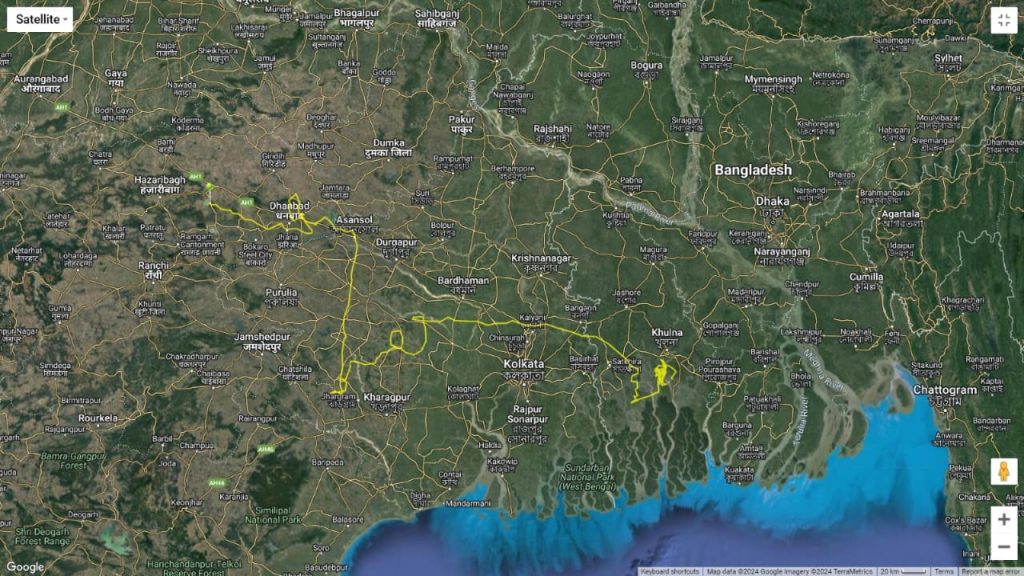
This vulture’s journey—from the waterlogged fields of Bangladesh to the skies over Jharkhand—has touched the hearts of all who hear it. It stands as a powerful reminder that even in the face of overwhelming odds, hope and resilience can lead to soaring heights.
































